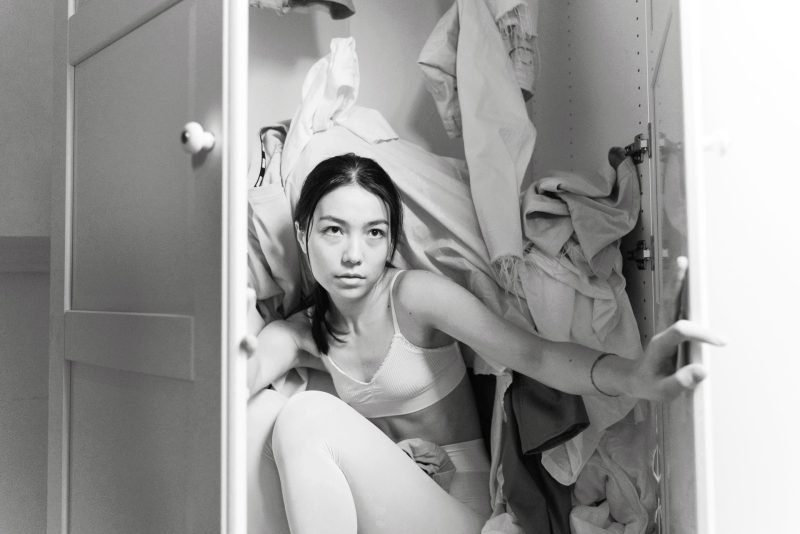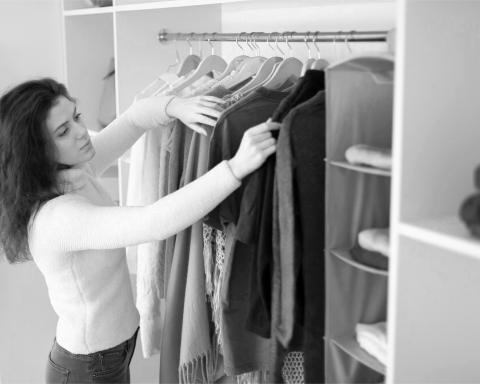Clutter is one of the most terrifying things possessed by mankind. Its existence has been known to affect the brain’s capacity to function, hindering productivity and leading to a loss of focus.
Sadly, only a few people are aware of these impacts. Only after it is too late do people realize that closet monsters might not be in the form of creatures they always see in Hollywood movies. It is in the form of unused clothes, unkempt accessories, and fashion waste.
An organized closet will not only release homeowners from the burden of clutter but also promote peace of mind and good overall well-being. Therefore, it is essential to be familiar with good closet organization practices.
This article will explain decluttering, provide a closet layout guide, and offer tips on preventing the clutter from returning.
5 Simple ways to start decluttering
Decluttering is essential to closet organization and can be challenging for the unprepared. Newbies need to learn when, where, or how to start. Luckily, this section will give away easy tips for homeowners to begin organizing their closets immediately!
1. Assess the closet situation
Before delving into decluttering, it is crucial to assess the situation of the closet. This is to prevent the clutter from returning. Homeowners must first analyze how much storage room the closet has.
This will help the owner determine and limit the number of items to be restored later. Homeowners can start by removing all the items from the closet and separating the unused, damaged, and unfit ones. Make sure to prioritize storing items that are used daily or frequently.
2. Sort and categorize the items
The potentially decluttered clothing items can be separated into three categories: unused, damaged, and unfit. Unused clothes are those that are rarely used by homeowners. The tip identifies which items have never been used for six months. If the item has not been used for six months, it may never be used again.
Consequently, damaged items are self-explanatory. It yields no benefit to keeping torn and worn-out jackets. Finally, unfit items are the ones that the owners have outgrown.
3. Set decluttering goals
After sorting the clothes, it is vital to set goals for decluttering. The plans will depend on how much time is allocated for the activity. People with a lot of time to spare can declutter their wardrobes entirely in a day, while those with less time can just start by decluttering specific items.
For example, homeowners can start by decluttering damaged or unfit clothes first. The clothes can be sorted out in boxes. The damaged items can be sent to a recycling center nearby, while unfit items can be sent to a donation center to be donated to the needy. This way, the decluttering practice can be both practical and less burdensome.
4. Decide (and stick to it)
After sorting the clothes into categories, it is time to decide what to keep, donate, or discard. The items the owner should keep are the functional ones and used often.
The unused and unfit clothes can be donated to the donation center or other relatives, while the damaged ones can be sent to recycling centers to be repurposed. It is crucial to minimize the practice of discarding clothing items into landfills to prevent environmental damage.
5. Deal with sentimental items
Nevertheless, clothes can be sentimental. Studies have shown that clothes are part of the owner’s identity. Although challenging, keeping them close to the family can make it easier.
Unused or unfit items can still be given to close relatives as meaningful gifts. The owners can share how significant the item is and how important it is for the relative to keep it safe. It can also be sold for money as pre-owned items, especially for those who need the cash.
If it is still difficult, consider taking a selfie by wearing the items. Research shows that taking photos can make it easier for owners to part with the items after.
Guide for closet layout and functionality
After removing all the clothes, it is time to take them back in. However, it is crucial to know how to make the closet functional to accommodate all the items kept, especially if the amount is abundant. This is important to minimize the time for choosing clothes from the closet daily. Here are tips on how to maximize the functionality of the closet.
Closet organizer and storage solution
The most important part of the closet is every part. This means that every aspect of the closet can function adequately as long as it is organized cleverly.
Designating the closet with red, blue, and yellow zones is essential. The red zone is for the most used clothes (clothes you wear in the house); the blue zone is for the frequent ones (clothes you wear to hangout); and the yellow zone is for the rarely used clothes (clothes that have sentimental value but decided to be kept instead of decluttered). This method is also applicable to accessories and shoes. Be bold about using a basket if no shelves or drawers are left.
Clothes arrangement
Homeowners can categorize items by type. For example, clothing items can be categorized as casual, formal, slack, or sports. Each type can also be sorted from darkest to brightest color for easy mix-match.
It is also beneficial to divide the items into the season so that the winter collection does not clutter the closet during summer days. The color arrangements are primarily used with hangers, but if the closet lacks one, the clothes can be folded and stacked horizontally instead of vertically.
Vertical space
Be bold about utilizing vertical space, especially if the closet space is not big enough. Hanging shelves can be beneficial for storing delicate items, such as boxes of accessories.
Moreover, hooks can be attached to the closet door as an extra space to hang belts and scarves. If the closet lacks a hanging area, consider installing hanging rods instead. The hanging rods can be used for hanging suits and other formal clothing. If finance is not a barrier, consider contacting a professional designer to look at the closet.
Underutilized space
Closet doors are one of many underutilized spaces in the household. A small closet means less storage. Therefore, it is important to spread the distribution of items around. For example, shoes can be put on a rack in the entryway instead of the closet, while seasonal clothing or costume can be stored in a sliding compartment below your bed.
Home cleaning and maintenance tips
Cleaning and maintenance are among the staple closet organization practices. Cleaning is essential for homeowners’ health and overall well-being, while maintenance can prevent the clutter from returning. Below are the best tips for cleaning and closet maintenance.
Regular cleaning routine
Cleaning the closet can be done after taking all the items out. First, homeowners need to vacuum the compartments and the floor of dust. Then, soak a rag in warm water that is mixed with soap. Wipe all the closet surfaces until clean and tidy, then leave them aside until dry.
After that, inspect all the clothes and sort out the one that needs to be laundered. Look out for moldy clothing and ensure they are soaked with warm water before laundering them and putting them back into the closet.
A cleaning routine is needed at least once a month to prevent molds, dust, and other unwanted particulars from inhabiting the closet.
Preventing molds
One of the most disturbing things that can be found in the closet is mold. The spores are usually brought in from the outside by sticking to the surface of clothing. The clothes act as a vector that transports the molds into the closet. The spore sticks to the surface of the closet or the clothes and reproduces with the support of high-level temperature and humidity.
Mold has been known to affect clothes’ longevity, causing loss of fabric strength, odor, and discoloration. To prevent this, ensure the closet wall is not adjacent to the bathroom or pipes. Attaching ceramic to the closet wall is also beneficial to ensure the humidity does not pass through.
If the closet wall is made of wood, it is essential to do regular cleaning at least once every two weeks. It is also important to separate the dirty laundry from the closet.
Long-term maintenance
Every practice needs to become a habit to last long. Closet organization is not a one-time commitment. Homeowners need to put the clothes back where they belong after use habitually. This will prevent the clothes from cluttering the closet.
Moreover, it is also important to make closet organization a fun thing to do. Feel free to invest in proper hangers, drawers, or storage boxes. Be bold in perking up the closet using wallpapers and illumination.
Finally, it is important to reduce consumption in the first place. Most closet organization problem stems from overconsumption. Limiting the number of items by decluttering should be coupled with limiting the desire to buy unnecessary things.
In conclusion
Closets tend to be the most cluttered space in the household. Most people disregard the effects of clutter and ignore the importance of closet organization. By studying this article, homeowners can avoid future complications for their health and well-being, defeating the closet monster once and for all.
If you would like to see more resources on closet organization, check out the Home Organization Science Labs. The lab uses the research of the Institute for Life Management Science to produce courses, certifications, podcasts, videos, and other tools. Visit the Home Organization Science Labs today.
Photo by Ron Lach on Pexels




